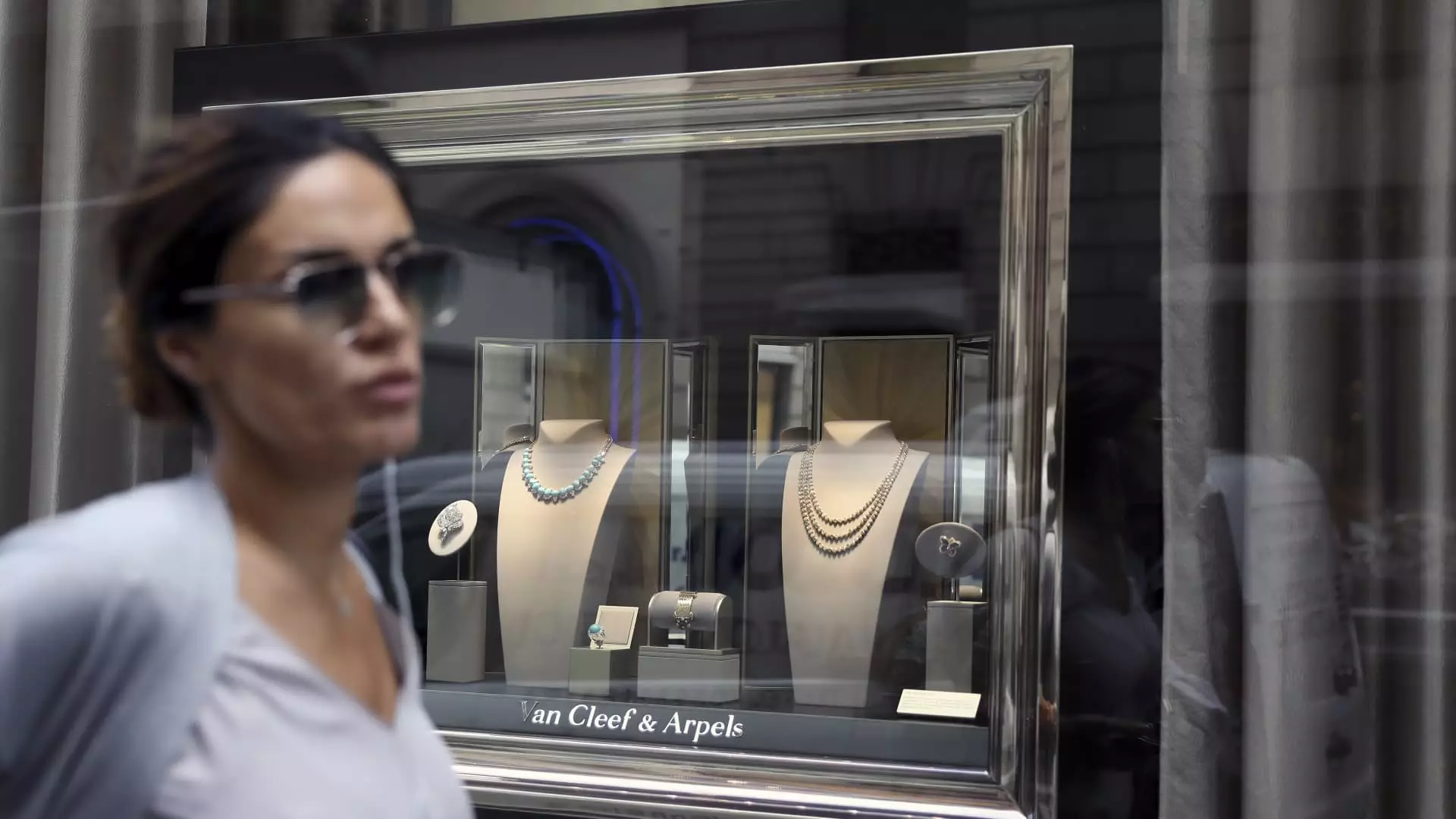In an era marked by stark economic divides, the juxtaposition of the super-rich lavishing funds on exquisite jewelry against a backdrop of declining demand from the broader luxury market is nothing short of jarring. The diamond-encrusted rings and rare gemstone necklaces that adorn the elite serve as a reflection of wealth not merely as a means of personal adornment but as a glaring statement of status and excess. Take, for example, Richemont, a Swiss luxury powerhouse responsible for some of the world’s most coveted jewelry brands, including Cartier and Van Cleef & Arpels. Their recent fiscal reports show a buoyancy in the jewelry sector, buoyed by an insatiable appetite for opulence among the wealthy, while simultaneously denoting a troubling trend for many brands across different luxury sectors.
The insatiable desire for the top-tier luxury goods reveals a sobering reality: while some consumers tighten their belts, the global elite remain unfazed, reaching for the most exclusive pieces as they define their status in society. The stark divide raises questions: what does luxury consumption reveal about societal values, and at what cost does this glittering display of wealth come? This fascination with high-end jewelry becomes a microcosm for a world that increasingly glorifies materialism, pushing those on the cusp of affluence further away from aspirations of luxury.
The Inescapable Shadow of Market Trends
Richemont’s impressive growth—an 11% rise in its Jewelry Maisons division—paints a compelling picture of resilience where it concerns luxury jewelry. However, not far behind lurks a sense of unease. Other premium players in the luxury market, such as LVMH, are experiencing stagnation, with brands like Tiffany & Co. underperforming. It signifies a bifurcation in consumer trends, wherein the elite continue their spending spree while aspirational buyers retreat from luxury commitments. This pattern suggests a larger, disconcerting narrative: Are luxury brands failing to reach and resonate with a broader demographic, relegating their focus to a select few willing to splurge?
In the world of watches, the scene is even grimmer for brands tied to Richemont, which suffered a significant 13% decline in sales. This decline, fueled largely by waning demand in China, underscores not just a localized economic issue, but a potential long-term shift in consumer paradigms. When the big spenders retreat, the ripples can be felt across markets—therefore, how long can brands rest on their laurels amidst changing consumer behaviors?
The Luxury Watch Dilemma
The luxury watch market paints a contrasting portrait to that of jewelry sales. While jewelry may be purchased more frequently and has reportedly become cheaper relative to other luxury items like handbags, watches are perceived as long-term investments—often passed down through generations. Luca Solca from Bernstein insightfully suggests that the post-pandemic buying binge has left many consumers saturated with luxury timepieces, potentially leading to a protracted period of consumer apathy. The ethos of watches is rooted in exclusivity, whereas jewelry seems to command a more flexible relationship, allowing for more fluid consumption patterns.
The complexity surrounding the luxury watch market is even further exacerbated by the dominance of privately owned brands such as Rolex and Patek Philippe. Their silence on performance numbers only adds to the confusion, making it difficult for analysts to gauge market health comprehensively. Yet amid these challenges, the commitment to luxury watches as heirlooms remains strong.
Richemont’s Strategic Play Amidst Challenges
Richemont’s attempts to assert itself in this tumultuous market hinge on the strength of its jewelry brands. “We are gaining market share in jewelry,” Chairman Johann Rupert declares, a sentiment both reassuring and precarious. However, his caution about avoiding unsubstantiated price hikes exposes the fragility of market dynamics. As inflation rises and consumer discretion tightens, luxury brands are forced to tread carefully, weighing their ability to sustain price increases against a backdrop of fluctuating economic conditions.
In light of macroeconomic factors—such as the strength of the Swiss franc, rising gold prices, and evolving tariff policies—questions about Richemont’s long-term market dominance only deepen. The narrative surrounding the luxury industry is already complex, and as the wealth gap widens, the sustainability of luxury consumption remains in question.
The landscape of luxury jewelry and watchmaking demands a re-examination of consumer behavior and market strategies, especially amidst the complexities of a changing global economy. As the adage goes, “what glitters is not always gold”—and in the heart of the luxury market, that sentiment feels particularly acute. Only time will tell if the glossy sheen of luxury can withstand the exposure of broader economic realities that threaten its very foundation.



Leave a Reply